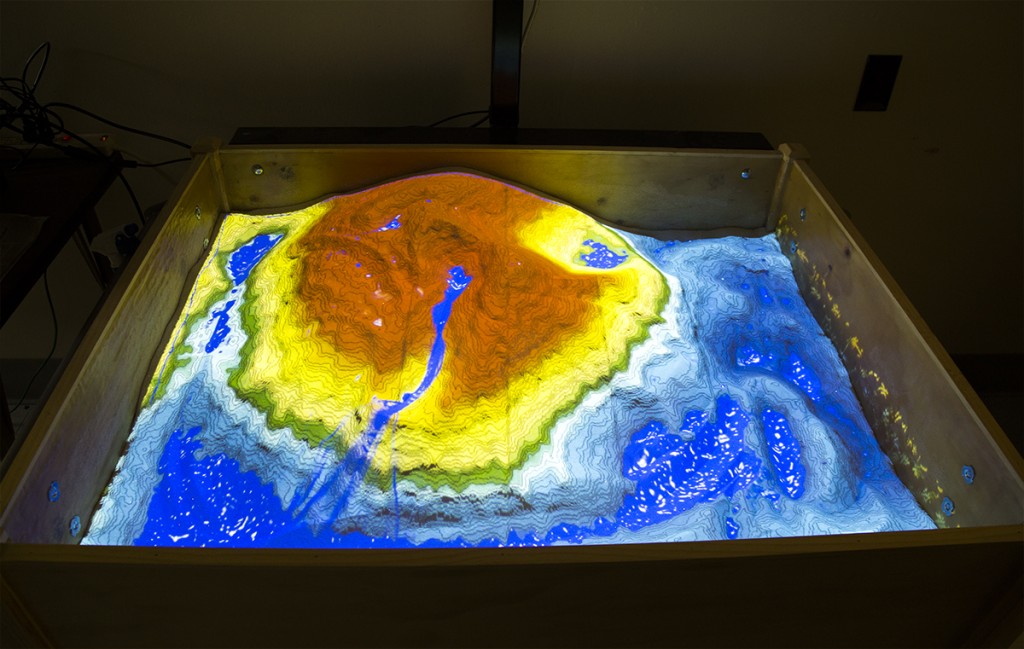Since 2013, freelance artist Laurie Hughes ’79 has been thinking small, very small.
Over the past year, she has been building her tiny house: a 6 ½-by-14-foot home and studio built on a towable trailer. For the former Allegheny geology student, this micro, movable home reduces her impact on the environment and offers liberating practicality.
Without the commitment of a mortgage and laborious maintenance of a traditional home, Hughes is free to explore, visit friends, and spend more time focusing on her artwork, which she will sell along her travels in her adorable abode.
Hughes has been detailing her experience on her blog, LHGrowingatinyhouseonwheels.blogspot.com, sharing photos and memories of the building process, which has become something of a community affair: “Numerous friends and acquaintances have helped me in various ways with my project,” she said, mentioning that friends have donated everything from insulation to windows to their company and talents.
“My good friend Kyle Meadows has been the homebuilder extraordinaire on the project, and his wife, a blacksmith, created a gorgeous hammered copper shower pan for me,” said Hughes. “Although I have only had a handful of group workdays, my experience of building the house is definitely one of community. Not only did my father and my mother each, through their estates, provide me with some of the wherewithal to help me finance the project, but countless friends, acquaintances, and perfect strangers have had their ears bent for advice, information, ideas and favors.”
The result of this community effort is Laurie’s 138-square-foot home and studio, fully wired with basic amenities, and complete with glass display cases and an empty six-foot tall wall to showcase her artwork. Now, with the exterior of the house complete, Hughes and her team are beginning to install repurposed furniture and cabinets to finish the interior.
Before moving in, Hughes also must face the daunting chore of giving away or getting rid of all items that would create clutter in the new house. “My process of minimizing has been slow; I am virtually certain my tiny house will be finished before my apartment is empty!” Hughes admits.
Her collection of art books and some of her artwork will be housed with various friends and she plans to rotate art supplies in and out of a storage unit in Covington, Ky., though the thoughtfully designed spaces within her home will store all of the necessities that complete her mobile home and studio. There is storage for supplies hidden in and above the window seat, the design of the kitchen allows for silk dyeing, even the bathroom accommodates her artistry: the compostable toilet unit can be moved to make way for a pottery wheel.
Hughes and her cat, Minnie, are planning to hit the open road in their tiny house in the coming months, visiting friends, family, and Gators on a loop through Kentucky and Ohio, upstate New York, western Massachusetts, Connecticut, and through Pennsylvania (with a hopeful stop in Meadville), all with the peace of mind that, “I see my tiny house as a nest, really, providing me with essential shelter and workspace. With my tiny house, barring catastrophe, I will always have somewhere to call my own.”
More about Hughes’ tiny house can be found on her blog along with photos of the construction progress and the adventures along the way.
— Elizabeth Donaldson ’15


